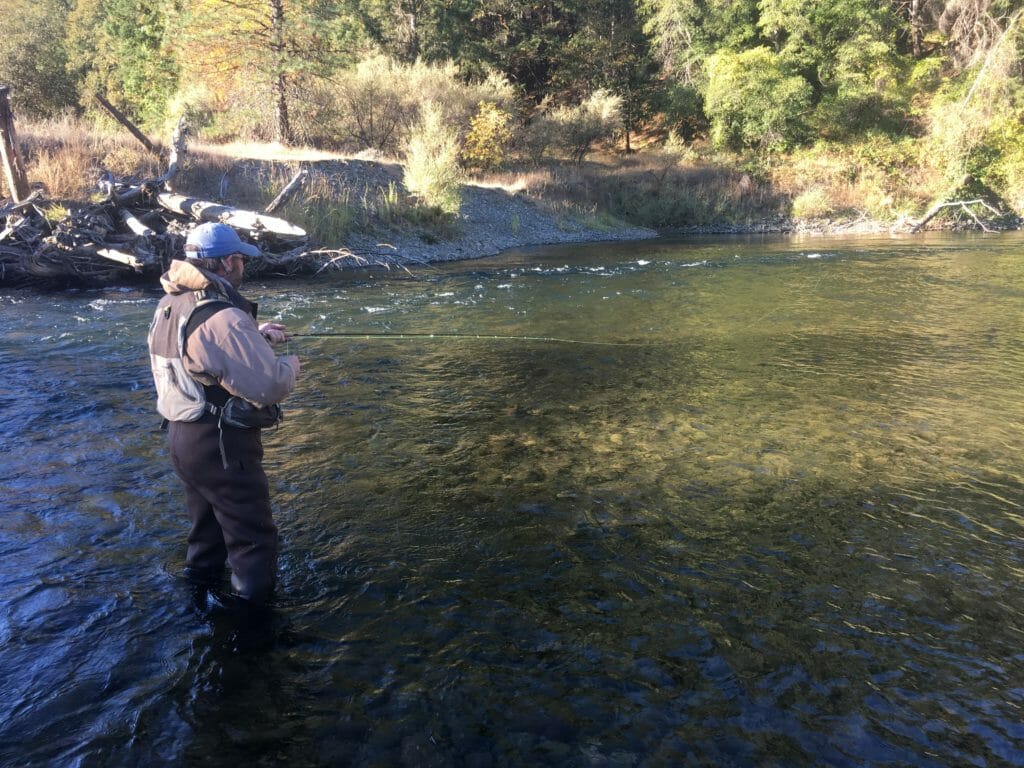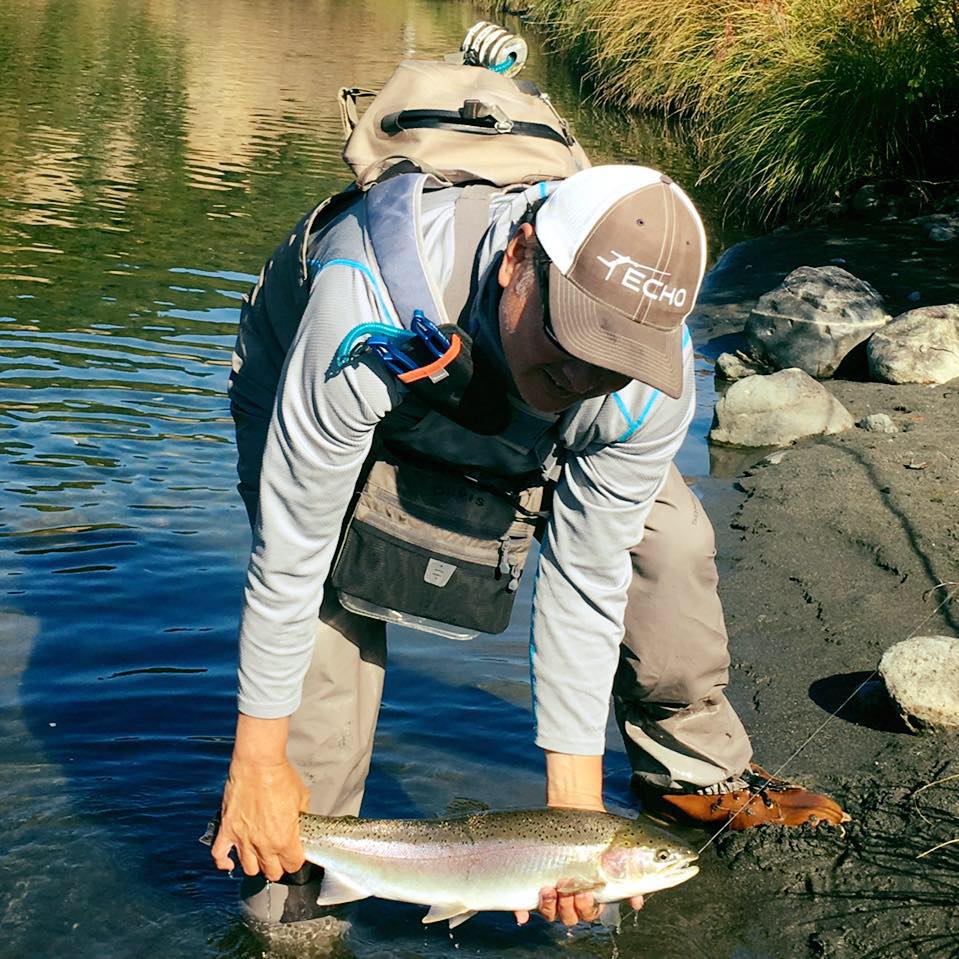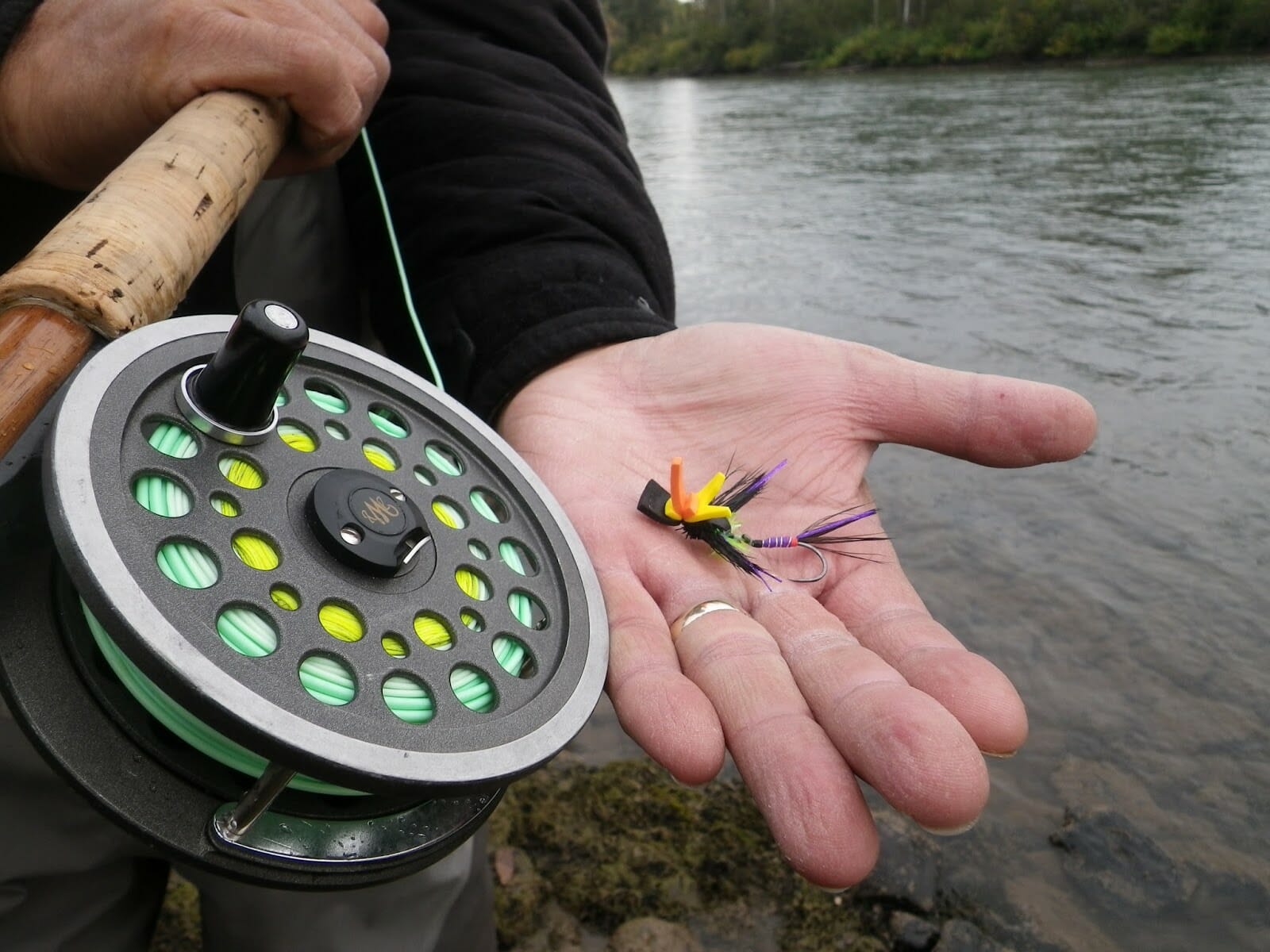Editor’s note: This is the second of two posts on skating flies for summer steelhead from the director of TU’s Wild Steelhead Initiative. Go here to read the first.
Recently, I shared some thoughts on the gear, techniques, and stream knowledge you might need to fish for summer steelhead with a skated fly—one of my favorite and most effective angling techniques. I left off with a look at the basics of presenting “skaters,” and will pick up this post from there.
Say you’ve been working down your favorite summer steelhead pool, swinging the skater down and across, taking a step or two downstream and repeating the cast. As your skater works across the run, a steelhead suddenly appears and takes a violent swipe at your fly, sending a cascade of water across the glassy surface of the pool.
Congratulations. You are “Cool Hand Luke” cool and didn’t try to set the hook, thereby snatching defeat from the jaws of victory! Instead, you defied the impulse of every synapse in your brain and sinew in your body, and waited to feel the weight of the fish before lifting the rod and snugging the fly into the corner of the jaw.
But you never felt that heart-stopping weight at the end of your line and your skater is still skating across the surface. It seems like 10 minutes must have elapsed before your brain begins to understand that the fish didn’t take the fly.

Your hands tremble as the skater continues its journey down and across the run. Then again! There’s an explosion on the surface near the dissipating rings from the steelhead’s first attempt as the fish tries again.
I can’t overstate how crucial it is that when a steelhead comes after your skater you cannot move a muscle until you feel the weight of the fish. You’ll pull the fly away from the fish every time if you react too quickly.
In fact, this is one of the greatest challenges a fly angler who is accustomed to fishing for trout will ever face. You don’t “trout set” on a steelhead taking a swung or surface fly. It’s difficult for many anglers to overcome their muscle memory in this regard, but in the steelhead game the delayed hook-set is critical.
When skating flies for steelhead, often a fish will simply miss the fly on the first attempt, but immediately turn and try again, this time successfully wrapping their cake hole around the fly. Over the many years I’ve worked as a guide on Oregon’s legendary North Umpqua River, I’ve seen steelhead swipe five or six times at a fly in the same swing before they finally take it solidly.
When steelhead are rising to a surface fly, I frequently stand behind my clients and repeat over and over again, as the fly skates over the most likely water, “Wait till you feel the weight of the fish, don’t set the hook, don’t pull it away from them.”
If a steelhead comes to the skated fly and doesn’t take it, simply allow the fly to continue its swing and mentally mark where the rise occurred. If the fish doesn’t make any other attempts as the fly comes to the end of the swing, make the exact same presentation as before. Do not strip off any additional line to lengthen your cast or take another step.
Same cast, same swing, same exact place as before. If the fish doesn’t come back a second time, you can try and third or even forth presentation before repositioning yourself for a new series of casts.
If a steelhead rises to a surface fly but misses the take and doesn’t actually feel the hook, you have a “player” that will likely be aggressive enough to come back to a subsequent presentation. This is how I go about making that presentation.
I start by taking several steps back upstream with the same amount of fly line as I had out when the first rise occurred. Now I simply cast, swing, and step down as I work the fly back over the lie of the fish. Frequently, when the fly makes its way back down to the fish in this rhythmic sequence, it will cause the fish to come back to the fly.
If that doesn’t work to induce another strike, move back upstream (10 or 15 feet) or shorten your fly line by 10 or 15 feet (or more if you’re not certain where the fish was at when it first rose to your fly) and change your fly. I frequently keep several smaller, dark or natural/drab colored wet fly patterns in my skater box for this purpose.
Once I’ve made a fly change to a smaller, dark wet fly, I begin the process of methodically working my fly back down towards the fish. Switching to a small, dark sub-surface pattern often will do the trick and the fish will take solid.

If neither of these techniques work, you have to decide how much time you want to spend trying to bring the fish back or whether you should move on to find another “player.” It seems that in some seasons, fish are easier to bring back to a fly, so often my decision is based on how successful I’ve been that season at bringing them back.
One summer on the North Umpqua, for example, we could get summer steelhead to swipe at skaters with abandon but had a very difficult time getting them to come back to anything. I called it the “summer of the one-rise wonders.”
An addiction is sometimes defined as any pattern of behavior that creates consequences for your life. Once you’ve experienced the thrill of fishing the summer steelhead run with a floating line and skater, spending every second you can waist-deep in a river, waiting for the adrenaline blast of a fish exploding on a skated fly, you’ll have to decide for yourself if the missed youth ball games, burned-up sick time from work, lonely significant others in your life and other “consequences” are worth it.
Dean Finnerty’s home water is Oregon’s Umpqua River, where he has worked as a salmon and steelhead fishing guide for many years. Finnerty’s “real job” these days is working for Trout Unlimited, where he is now northwest regional director for our Sportsmen’s Conservation Project as well as director of our Wild Steelhead Initiative.
Top photo courtesy Todd Hirano, Dry Line Steelhead blog.


